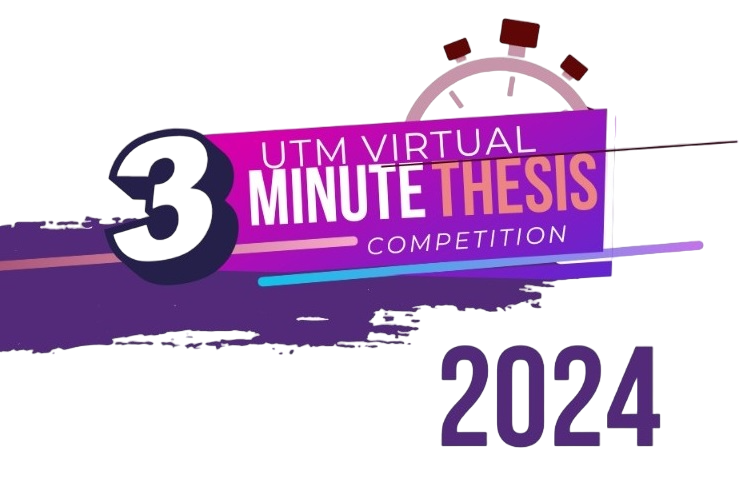Recording Guide
Device Options
Recording your presentation can be done using a camera and/or hand-held video recorder. However, most phones allow you to record through the camera function and most computers have recording ability (via camera or webcam) using inbuilt programs such as:
Windows
- Camera App
- Windows Movie Maker
Macintosh
- QuickTime
- iMovie
Online programs which you might like to consider include:
Zoom – see how to record yourself via Zoom.
Video Examples
Examples of virtual 3MT video recordings are as follows:
Filming at Home
There are three factors to consider when selecting your location to ensure you are producing the best video possible:
Light
Dark environments impact the overall quality of your video because cameras do not perform well in dim lighting. Ensuring you are well-lit guarantees the camera and therefore, your audience, can see you. Look for a room in your home that has lots of natural light. If you are using light from a window, ensure you are facing towards the window so the light falls on you directly. Any additional lighting you can introduce will further improve the quality of your video. Look around your home for desk lamps, torches etc. Watch this tutorial for more information.
Sound
When filming a video at home, ensure you choose a very quiet environment where you have as much control over the sound as possible. For example, choose a small room where you can close all doors and windows. Make sure any noisy electronics in the room such as fans, air conditioners, computers, phones and possibly even your fridge are temporarily turned off. These are much louder in the video than you may think and are very distracting to your audience! Be aware of any audible interruptions you don’t have control over such as airplanes, lawns mowers and cars. Consider filming during a quiet time of day such as early in the morning when there are likely to be fewer interruptions. If there are audio interruptions during your recording, do not continue. Wait it out and try again at a later point!
Background
Aim for a clean, plain wall as your background, completely free of visual distractions from the waist up to where you will be framing your shot.
Setup
Whether you’re filming on a phone, tablet or webcam, there are further factors to consider when setting up to film your video:
Support
Ensure phones and tablets have enough storage available, is in airplane mode, fully charged and either connected to a tripod or, placed on a stable surface (think creatively – Blu Tack to the wall). Your friend cannot offer to be a tripod by holding your phone or iPad for you: Your video needs to be completely stable as the movement is very distracting.
Camera Orientation
Ensure phones and tablets are turned onto their side so the video is filmed horizontally not vertically. This is to ensure the finished video is in the correct shape and size when uploaded to YouTube.
Eyeline
To ensure your eye line is correct, the tripod or surface where your recording device is placed should be high enough so that the camera lens is in line with your eye level. Try to avoid the camera lens having to either point up or down towards you.
Framing
Set up your shot so you are to the left of the center of the frame without being cut off at the top and so you can be seen from the waist up. The right side of the video frame should be just the blank wall background, as this is where your slide will be edited in.

Focus
Before you start recording, ensure your device can autofocus on you and isn’t focusing on anything else around you instead. Be sure to watch your recording back and ensure you remain in the focus for the entire duration.
Proximity
Ensure your recording device isn’t too far away from you. The microphone on the device should be as close to you as possible to achieve both the desired framing and to ensure the audio is as clear as possible.
Test Recording
Complete a short recording of a portion of your talk. Ensure you are speaking at the volume you intend to use for your presentation. Review the test recording to ensure all of the above elements are complete and working.
Presentation Tip
Be aware of your eye movement. Maintain eye contact with the camera lens as though they were a person in the audience watching you present live.
SLIDE Guide
Before you start work on your slide, you should take the following rules into account:
-
- A single, static PowerPoint slide is permitted (no slide transitions, animations or ‘movement’ of any description).
- Images used in the slide must be your own, or you must have permission from the owner of the photo(s) and provide proper credit(s).
- No additional electronic media (e.g. sound and video files) are permitted.
An engaging visual presentation can make or break any oration, so you want your slide to be legible, clear and concise. You may like to consider some of the following suggestions:
-
- Less is more: putting too much text and complicated graphics will make the audience read your slide rather than listening to your 3MT.
- Personal touches: it allows your audience to understand the impact of your research.
- Creativity drives interest: Slide should simply complement your spoken oration. Do not rely on your slide to convey your message.
- Work your message: Use metaphors to explain your message or research. This will attract the audience to focus more on your presentation.
Presentation Guide
Device Options
Presentation storyline
It is encouraged to present your 3MT like storytelling. The presentation should focus on the main point of the research work to make it easier to be condensed within three minutes. It must have an introduction, key points and summary to highlight the importance of the study.
Rules of Goal Setting
The outcome of the presentation is that the audiences must understand the research work. The objective, problem statement, importance and expected findings of the work should be digested by the end of 3 minutes presentation.
What not to do
Do not present too formal like a viva-voce. Use shorter words, sentences and paragraphs. It is allowed to include humour, however, be careful not to lower your presentation content.
Practice makes perfect
Feeling nervous before you present is natural, and a little nervousness can even be beneficial to your overall speech. Nonetheless, it is important to practice so you can present with confidence and clarity. Practicing will also help you gauge the timing of your 3MT so that you keep within the time limit.
Vocal range
- Speak clearly and use a variety of tone, speed and volume in your speech.
- Do not rush – find your rhythm.
- Remember to pause at key points as it gives the audience time to think about what you are saying.
Body language
- Hold your head up and make eye contact.
- Fully integrates physical gestures with content to deliver an exemplary speech.
- Do not make the common mistakes of moving back and forth, pacing for no reason or playing with your hair as these habits might be distracting for the audience.
Record yourself
- Record and listen to your presentation to hear where you pause, speak too quickly or get it just right.
- Then work on your weaknesses and exploit your strengths.
Look to the stars!
- Watch your role models such as academics, politicians and journalists.
- Break down their strengths and weaknesses and analyze how they engage with their audience.
- View presentations by previous 3MT finalists.
Dress
- Do not wear a costume of any kind as this is against the rules (as is the use of props).
- You may like to dress for a job interview or an important meeting since there is no dress code. It is important that you feel comfortable so you can focus on your presentation.

